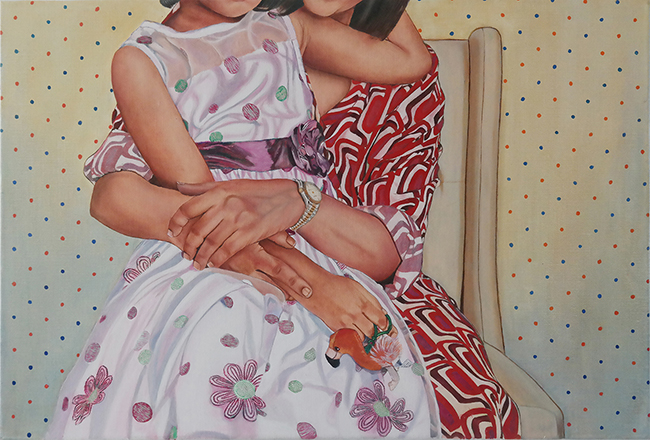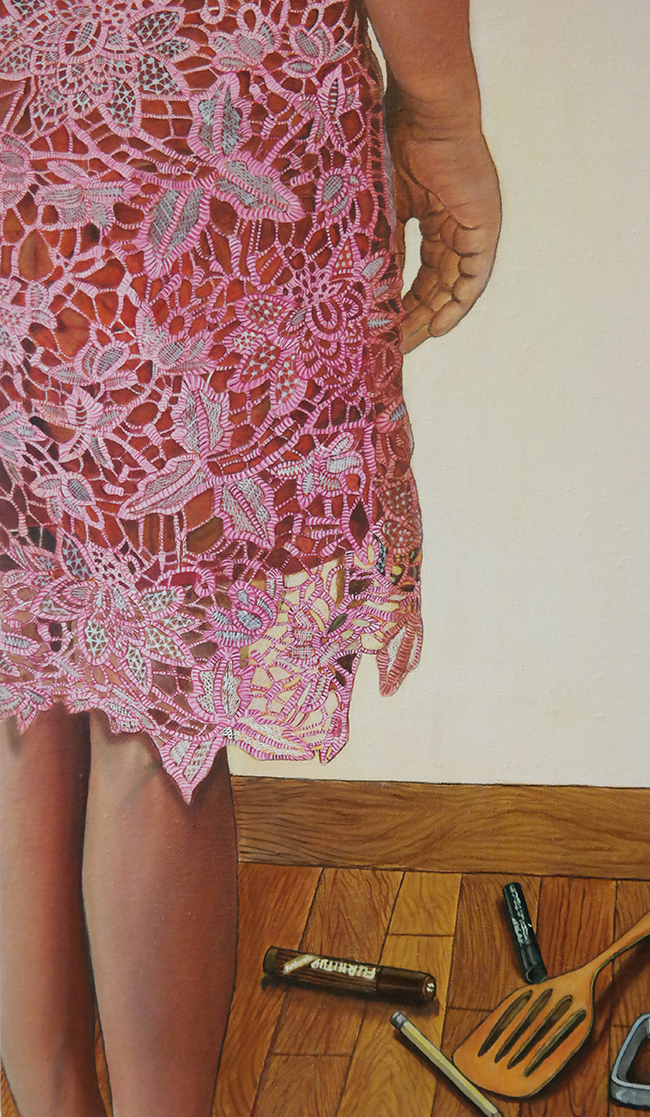Gupta’s journey as an artist began at the Lasalle College of Arts in Singapore, where she earned her Art degree. Since then, she has been on a quest to explore the intricacies of still life and the emotive realms of figurative art. Her art, as she puts it, transcends human differences, challenging societal perceptions and roles.
One of the unique aspects of Gupta’s work is her approach to portraiture. While she identifies as a portrait artist, she often eschews facial depictions, breaking free from racial boundaries. Instead, she frequently uses herself as a model, creating personas that captivate and spark contemplative dialogues.
Gupta’s art delves into relationships, crafting metaphors that breathe a fresh perspective into conventional beliefs. Her compositional structure skillfully blends individuals with chosen objects, stripping away facial expressions to delve into the intricacies of body language.

One of her notable works, “Holding On,” is a prime example of her ability to convey complex themes through her art. The piece, which measures 76x50cm and is oil on linen, explores the multifaceted role of women in today’s society. It uses the evolving relationship between a mother and her child as a metaphor, symbolizing that whatever we possess today is not meant to be there forever. The girl, held by her mother, holds a toy flamingo, signifying potential and balance.
Gupta’s art carries a feminist essence, although she does not claim herself to be a feminist artist. She purposefully leaves messages open-ended, inviting viewers to interpret narratives in their own language, transcending artistic boundaries.
Below is the interview with the artist:
1. Can you describe your artistic style and the themes that inspire your work?
My work draws inspiration from still life and portraiture. As a figurative artist, I cherish the freedom this art form affords me to connect with my audience. My inspiration stems from the thoughts in my mind, which I enjoy expressing on canvas. Each painting of mine encapsulates a new story or message. By translating my thoughts onto the canvas, my aim is not to engage in a conversation with myself but to convey a broader meaning to the audience. I desire my audience to feel as if they are observing from outside, both physically and emotionally.
2. How do you approach the creative process, from ideation to completion of a piece?
Finalizing the composition of my work marks the most critical phase of my creative process. Before settling on the composition, I explore various props and articulate the message underlying the work. I don’t believe in delivering a very direct message to my viewers. Instead, I think a message resonates more deeply when it leaves open-ended questions. I consistently make mental notes about my future work, and these reflections manifest later in the form of visuals.
3. What role does experimentation and risk-taking play in your artistic development?
As an artist, I am continually honing my technique. While I primarily identify as a traditional oil painter, I am constantly experimenting with my subject matter. Consequently, during the composition stage, my mind is brimming with thoughts and ideas. This dynamic process results in each series, typically taking a year and a half to complete, being distinct from the others. I also enjoy experimenting with specific color
themes in each series. Conceptually, I like to challenge social norms through my work, embracing a willingness to take risks.
4. Can you share an example of a project that challenged you and how you overcame obstacles in the creative process?
If I were to pinpoint a particular series of work that challenged me in a specific way, I might find it difficult, as each piece presents its own set of challenges—some technical, others conceptual.


